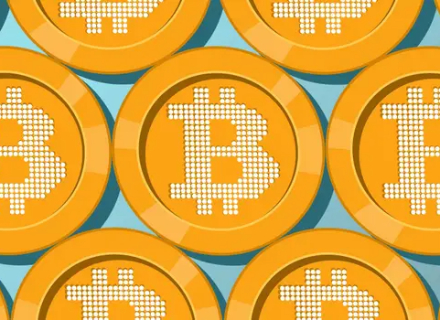The New Gold Standard: How Stablecoins Are Reshaping Global Payments Infrastructure
- Stablecoins now form global payment infrastructure, enabling faster, cheaper cross-border transactions via partnerships with traditional banks and fintechs. - Circle's USDC integration with Mastercard and Finastra processes $5T daily in 50+ countries, marking first stablecoin settlement in key emerging markets. - U.S. GENIUS Act and EU MiCA framework provide regulatory clarity, driving institutional adoption with 90% of surveyed banks using or testing stablecoins. - Inflation-hit economies like Argentina
The global payments landscape is undergoing a seismic shift, driven not by speculative hype but by the quiet, methodical integration of stablecoins into the infrastructure of commerce. In 2025, stablecoins—digital assets pegged to fiat currencies like the U.S. dollar or euro—are no longer experimental tools. They are the rails of a new financial system, enabling faster, cheaper, and more transparent cross-border transactions. This transformation is being accelerated by strategic partnerships between stablecoin issuers and traditional financial institutions , regulatory clarity, and the urgent demand for solutions in inflation-plagued economies.
The Partnership Playbook: From Mastercard to Solana
Circle’s collaboration with Mastercard and Finastra exemplifies the new playbook. By integrating USD Coin (USDC) into Mastercard’s payment network and Finastra’s Global PAYplus platform, the company has enabled merchants and acquirers in the Middle East, Eastern Europe, and Africa to settle transactions in stablecoins. This marks the first time Mastercard has offered stablecoin settlement in these regions, reducing costs and settlement times from days to seconds [1]. Finastra’s platform now processes over $5 trillion in USDC-based international payments daily across 50+ countries, a testament to the scalability of stablecoin infrastructure [3].
Asia, too, is emerging as a stablecoin hub. A joint venture between Circle , SBI Group, Ripple, and Startale is building a tokenized asset trading platform in Japan, leveraging USDC’s regulatory compliance to attract institutional investors [1]. Meanwhile, Japan’s JPYC stablecoin has secured its first funds transfer license, signaling a regulatory green light for broader adoption [6]. These partnerships are not isolated experiments; they are part of a coordinated effort to replace legacy systems with decentralized alternatives.
Regulatory Clarity as a Catalyst
The U.S. GENIUS Act, signed into law in July 2025, has been a game-changer. By establishing a federal framework for stablecoin issuance, the legislation mandates 100% reserve backing, monthly public disclosures, and compliance with AML/KYC standards [4]. This clarity has spurred institutional adoption, with 49% of surveyed financial institutions already using stablecoins and another 41% in pilot phases [1]. The act also preempts state-level money transmitter laws, reducing legal friction for cross-border operations.
Europe’s MiCA framework has similarly legitimized stablecoins. Banks like Société Générale now issue MiCA-compliant stablecoins for cross-border payments and FX trading [1]. In the U.S., the Office of the Comptroller of the Currency’s Interpretive Letter 1184 allows banks to custody stablecoins, further embedding them into traditional finance [1].
Real-World Utility: From Remittances to E-Commerce
Stablecoins are solving real-world problems. In Argentina, Nigeria, and Turkey, where local currencies are volatile, merchants use QR code-based USDT payments to facilitate daily commerce [5]. The Bitcoin Lightning Network enables near-instant, low-cost transfers for e-commerce and gaming, bypassing the inefficiencies of legacy systems [5].
Data from the Artemis report underscores this shift: stablecoin payments have annualized at a $72.3 billion run rate, with B2B transactions alone hitting $36 billion [4]. This is not speculative capital—it is the lifeblood of global trade.
The Road Ahead: Infrastructure, Compliance, and Competition
As stablecoins mature, infrastructure and compliance will define their success. Proof of Reserves (PoR) and formal verification of smart contracts are becoming table stakes for trust [3][5]. Financial institutions must now decide whether to build in-house capabilities or partner with fintechs to stay competitive.
The risks are real—cybersecurity threats, depegging events, and regulatory shifts—but the rewards are greater. If current trends persist, stablecoin transaction volumes could surpass traditional payment systems within a decade [1]. For investors, this is not a speculative bet but a structural shift.
Conclusion
Stablecoins are no longer a niche corner of the crypto market. They are the infrastructure of a new financial era, driven by partnerships, regulation, and real-world demand. For institutions, the question is no longer if to adopt stablecoins but how to do so before the window closes.
**Source:[1] Stablecoin Settlement Breaks Borders as USDC Powers Global Payments [2] Stablecoins Reshape Global Payments as Traditional Banks Embrace Digital Settlement [3] The Stablecoin Race in Payments: USDT, USDC, PYUSD [4] The GENIUS Act of 2025 Stablecoin Legislation Adopted in the US [5] State of Stablecoins 2025: The Payments Infrastructure Reset [6] How the JPYC Stablecoin Could Lead Japan's Digital Finance Comeback
Disclaimer: The content of this article solely reflects the author's opinion and does not represent the platform in any capacity. This article is not intended to serve as a reference for making investment decisions.
You may also like
Mars Morning News | The Federal Reserve is expected to cut interest rates on Wednesday, S&P Global assigns a "B-" credit rating to Strategy
S&P Global has assigned a "B-" credit rating to bitcoin treasury company Strategy, classifying it as junk debt but with a stable outlook. The Federal Reserve is expected to cut interest rates by 25 basis points, with a possible split in the voting. The Hong Kong Securities and Futures Commission has launched a tender for a virtual asset trading monitoring system. Citi is partnering with Coinbase to explore stablecoin payment solutions. ZEC surged significantly due to halving and privacy topics. Summary generated by Mars AI. The accuracy and completeness of this summary are still being refined and updated by the Mars AI model.

BTC Volatility Review (October 6 - October 27)
Key indicators (4:00 PM Hong Kong time on October 6 -> 4:00 PM Hong Kong time on October 27): BTC/USD -6.4...

Cathie Wood warns: As interest rates rise next year, the market will be "chilled to the bone"
AI faces adjustment risks!
2025 Trading Guide: Three Essential Trading Categories and Strategies Every Trader Must Know
Clearly identify the type of transaction you are participating in and make corresponding adjustments.